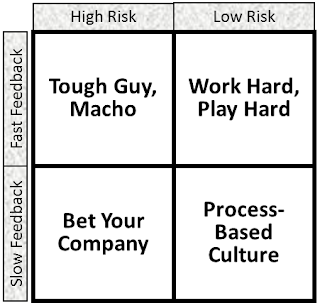Steve Hilton, David Cameron’s one-time policy adviser currently on mid-term sabbatical in California, has given Stanford students some frank insights into the workings of Government.
- The Prime Minister sometimes opposes the measures his own ministers put forward. He often finds out about these policies from the radio or newspapers.
- Only 30 per cent of what the government is doing is actually delivering what we are supposed to be doing.
- It’s a brilliant system for paper-shuffling people to be in control. The bureaucracy masters the politicians.
I just wanted to make a few comments about collective intelligence and the role of the policy adviser.
Some Prime Ministers and Presidents have had an extraordinary ability to get through large quantities of paperwork and master the critical points. Cameron has many strengths as a leader, but this doesn’t seem to be one of them. As a consequence of this, he is effectively leaving journalists to perform a filtering function – thus he pays attention to an issue only when it is drawn to his attention by the media, and of course, this delayed attention may cause some irritation or embarrassment sometimes. Perhaps a more diligent policy adviser should have picked up some of these issues earlier?
In the system we may infer from Hilton’s description, journalists are not only performing a filtering function but also a sensemaking function. There is clearly a difference between the way a policy looks in some bundle of government papers and how it looks when it appears in the media. Again, we might have expected a diligent policy adviser to have anticipated how policies would appear to the public.
But it seems that the politicians and their advisers don’t control the volume of paperwork they are given to wade through. In his seminar, Hilton dramatically produced a pile of paper one foot high (representing four days committee output), prompting gasps from students. “The idea that a couple of political advisers read through all this and spot things that are bad, things that are contradictory, is just inconceivable”, pleads Hilton.
Of course it is, say members of the previous government including Damian McBride, Gordon Brown’s former political press secretary. Which is why the previous government had a greater number of political advisers, and a coordination process (known as the “grid”) allocating a manageable number of pages to each. McBride acknowledges that the grid sometimes resulted in leaks to journalists, and suggests that Hilton may have downgraded the grid in order to reduce these leaks, but argues that the grid was a key mechanism for effective government and that the problems Hilton complains about are an inevitable consequence of abandoning this mechanism.
It may also be a consequence of regarding the civil service as a malignant force, trying to pull the wool over the politicians’ eyes. (This was a great theme in the original “Yes Minister” series, but has turned into a tired joke in the 2013 series.) Edward Pearce stands up for the independence of the civil service, and complains that it is Hilton who is unrepresentative and unelected.
When Hilton talks about “delivering what we are supposed to be doing”, this presumably refers to some kind of top-down strategic plan, formulated before the election and presented in the manifesto. But this raises some important questions about the relationship between strategy and execution, and the possibility for strategies to emerge and evolve during execution.
Which in turn raises some questions about government as a learning system. Recent governments (including Blair’s New Labour) have had a focus on delivery, which emphasizes single-loop learning – getting better at achieving a fixed set of goals. However, this has to be balanced against double-loop learning – changing the goals to fit changing circumstances.
In an earlier analysis of New Labour and Delivery, two MORI analysts argued that delivery and achievement was at least partially subjective and rhetorical.
- “Delivery” is not keeping your promises, it is convincing the public that you have kept your promises.
- What matters is not what you promise, but what the public understands by those promises, and what expectations they arouse.
Hilton clearly agrees about the importance of external communication. He encourages his students to think about how policies can be “branded”, and suggests that policies often fail not because they weren’t very good policies in the first place but because they are poorly presented. That might be true, but it is also a common excuse: politicians genererally find it easier to admit to errors in presentation than to errors in policy.
Which part of this ecosytem has the longest memory? Presumably the civil servants. And which part has the shortest memory? With some honourable exceptions, probably the media. According to one theory of change, when there are several subsystems operating on different timescales, it is the slowest system that controls the whole. And the Purpose Of the System Is What It Does.
Roger Mortimore and Mark Gill, New Labour and Delivery (IPSOS MORI May 2004)
PM’s aide exposes No 10’s lack of control (Sunday Times, 13 January 2013) (subscription)
John Harlow and Eric Kiefer, Shoes off, feet up, the dude lifts lid on No 10 (Sunday Times, 13 January 2013)
Patrick Hennessy, David Cameron finds out about policies from the newspapers, reveals Steve Hilton (The Telegraph 13 January 2013)
Damien McBride, Whither the Grid? (13 January 2013) Why did the Grid Wither? (14 January 2013)
Edward Pearce, The Unelected (LRB 25 January 2013)
James Tapsfield, Prime Minister often finds out about policies from the radio or newspapers, says former advisor Hilton (The Independent 13 January 2013)
Richard Veryard (ed), Fragile Strategy or Fragile Execution (Storify, December 2012)
Nicholas Watt, David Cameron’s ex-policy guru Steve Hilton criticised over policy remarks (Guardian, 13 January 2013)
updated 25 January 2013

